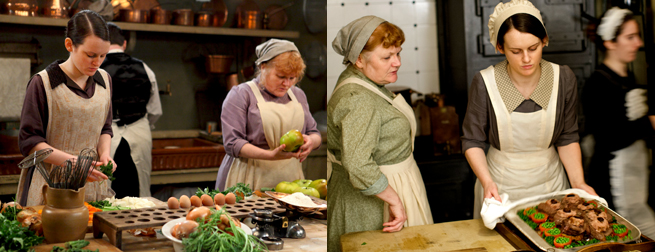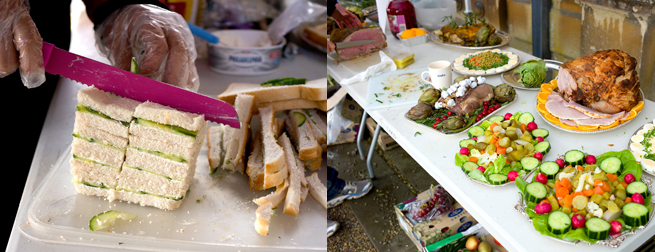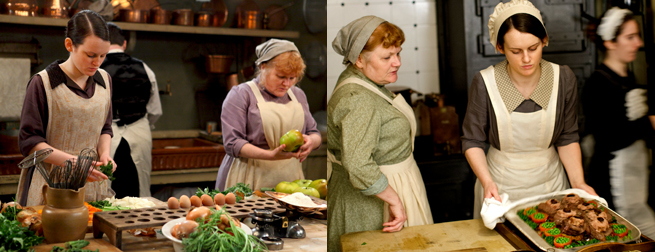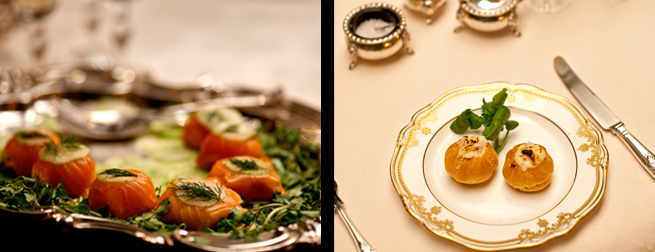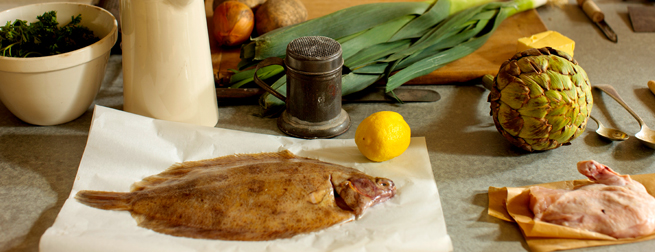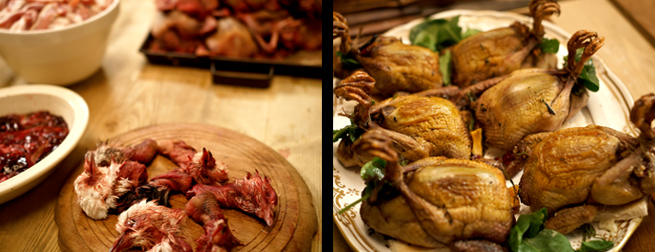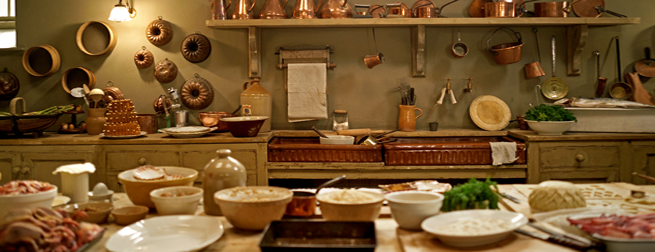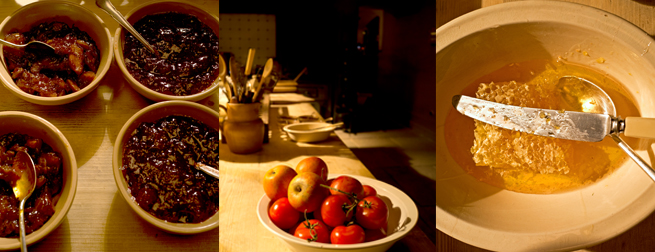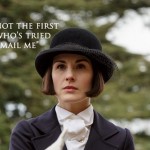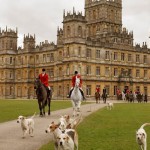Frozen gravy, fake prawns, tinted cream cheese & ‘chicken-fish’: The Food Secrets of ‘Downton Abbey’
If you happen to reside the UK, you are well aware of the fact that the final series of Downton Abbey is just around the corner, most likely in September. Mere months away. U.S. audiences, however, are still roughly 6 months away of the January 3, 2016 final series premiere on PBS. For that reason alone, it’s time to touch base and reconnect a bit with Downton Abbey.
With thanks to PBS’ Masterpiece series for this month’s lengthy effort for helping us try and alleviate as much of our separation anxiety as possible. Here, we go behind-the-scenes and look at some of the food secrets that take place during filming as PBS’ Masterpiece caught up with Downton Abbey‘s food stylist Lisa Heathcote to learn insider secrets about preparing and filming the gourmet grandeur that is Downton Abbey‘s food.
It’s the job of food stylist Lisa Heathcote to create every tantalizing morsel that appears onscreen in Downton Abbey. But not all of it is edible, and chances are if you see Mrs. Patmore slaving away at a dish, it may never be served or eaten. Working with Julian Fellowes’ scripts and the series’ set designer, Heathcote plans what Mrs. Patmore & Co. will cook during scenes and what will be served to the Crawleys and their guests upstairs. Then in her professional kitchen, she cooks the food, packs it up, and drives it to the set, whether at Highclere Castle or the film studio, Ealing, the home of Downton Abbey‘s below stairs set.
For the first three seasons of Downton Abbey, Heathcote had to prep food outdoors at Highclere Castle in a sort of field kitchen, in a tent called an “easy-up.” On one occasion, filming Season 3, she was preparing food in her tent outdoors for a big banquet scene with lots of different meats. She describes, “The side of my tent is open, and I could see Highclere Castle countess Lady Carnarvon walking up the side of the lawn with three very big dogs. And they just took off, running towards me because they saw the meat.” Fortunately, the crew acted fast and the meat was saved.
“At first, the easy-up worked well. But once Season 3 started filming in February, the unusually freezing weather, compounded by Highclere Castle’s unique microclimate, became a problem. One particularly icy and windy day, she describes, “I turned around to find that the gravy had become frozen! And we couldn’t even lift the gravy boat off the table because it was frozen there.” For Season 4, she was given a small craft truck, which has made her very happy.
Another challenging moment was in Season 3, when the script dictated that footman Jimmy drop a lobster on the Dowager’s lap. “Of course, wardrobe was worried because they didn’t want a greasy lobster on the silk costume, but the script called for it.” Dressing fake prawns in with real prawns and lobster, she recounts, “I stuck all the other real food onto the platter with the fake prawns and parsley, just enough to drop off onto her lap without there being glue and a big mess all over her silk dress!”
Heathcote laughed heartily when asked whether the actors, after four seasons of playing cooks on Downton Abbey, had become skilled chefs. But she conceded, “I think they’re getting better at chopping! And they’re getting better at handling all types of food. They’re very good because they’re not squeamish. And they’re getting better at handling pastry and kneading things. But most of the time I set up. For example, I had Daisy making big pastry boats and putting leaves all over it. So I made the pastry boats, I stamped out leaves and them all over it, and then Daisy’s just putting the last one on. So for all the world we believe that Daisy’s done it and she looks like she’s very talented and clever!”
How does Heathcote make the food look so edible and delicious, yet able to withstand the hours of filming, the hot lights on the set, and the numerous takes? “They’ll do a few takes, and then we think it looks a bit sad, so we reset the plates. It’s like running a restaurant.” Making wise choices of ingredients is essential. “For instance, certain leaves will wilt. Good old-fashioned watercress is great, but you’ve got to have a lot of it, and keep resetting it.” But not everything on the plate is edible. She makes aspic and jellies, very much in fashion at the time, much firmer than they should be, “so that they will be able to stand and do a little bit of a world tour.” Because jelly would melt if she made it palatable, she decorates fruit-based dishes with jelly so the cast can eat around it.
Heathcote describes Season 4 as the season of savories and fish mousse. To accommodate numerous script references to “delicious fish mousse,” and “delicious salmon mousse,” she used tinted cream cheese set in molds to create the fish dishes. “Last season seemed to have endless fish, which was really made of chicken, so we had chicken-fish, and this season we’ve had cheesey-fish. Otherwise with actual fish it would get a bit smelly and unpleasant.”
Think the actors get hungry sitting around the food hour after hour? While they usually only eat the foods like watercress or cucumber, Heathcote notes, “They do occasionally tuck in [eat heartily], depending upon how peckish [hungry] they are, and where we are in the day. If it’s just before lunch, they’ll tuck in.”
On set, Heathcote busily pieces together and decorates the components she’s prepped offsite. When footman Alfred was showing Daisy how to make a profiterole-like pastry called choux buns, the script described the buns going in and out of the oven, requiring versions of them in their raw and cooked state. Heathcote describes, “Over in the inky darkness at the side of the set, I was beating away and piping things, which we put in the prop oven. And then Alfred takes them out and they look like they’re fantastically risen and puffed and cooked and wonderful!”
Downton Abbey’s pig farm tells only part of the story of the estate’s economy. Heathcote describes how grand estates like Downton Abbey at their height were completely self-sufficient. “All the vegetables, the fruit, the meat, the dairy, the cheese, would have come off the estate and it would all have been absolutely delicious. At the time it all would have been organic and produced straight out of the ground and put into the pot. It would have been very good country fare, good wholesome food but elegantly decorated.”
In: Drama

